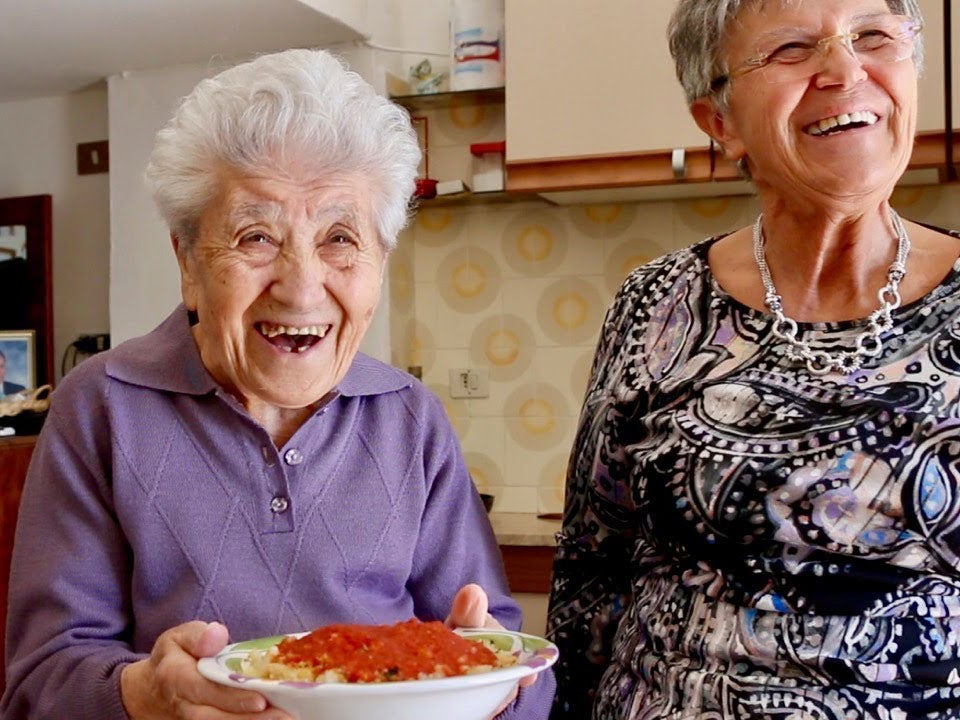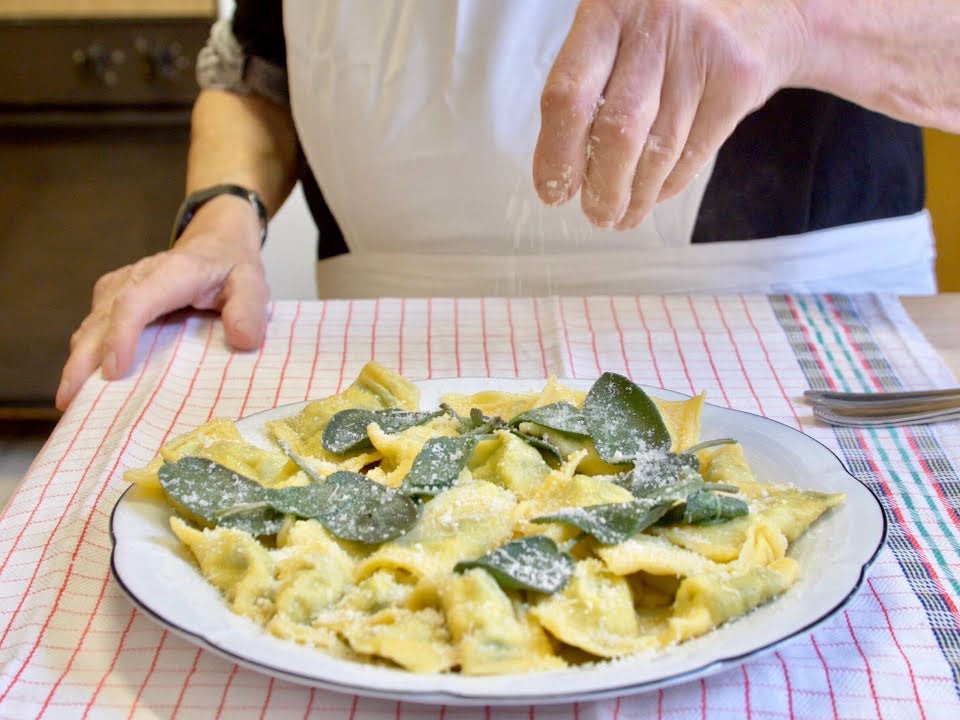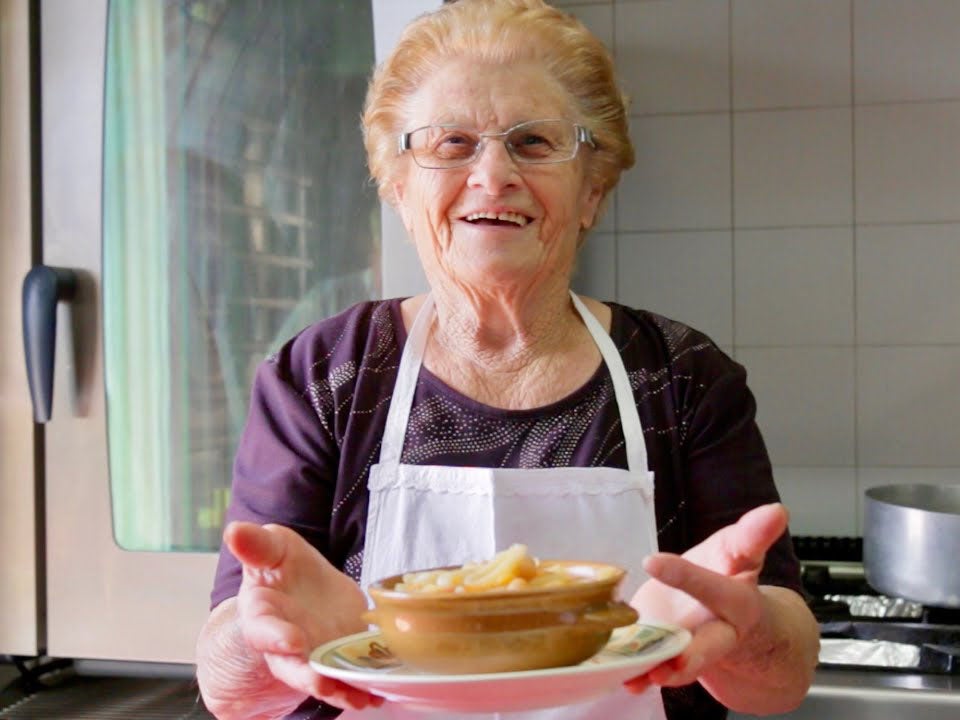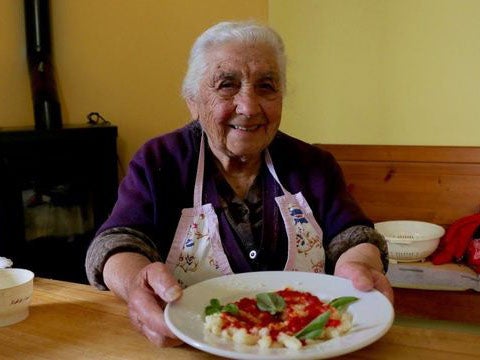‘A soothing eddy of Old World expertise’: the YouTube nonnas making pasta cool
They’re the grandmas everyone wishes they had. Kim Severson meets the domestic dynamos who are bringing their time-honoured pasta skills to nourish hungry millennials and Gen Z-ers

Your support helps us to tell the story
From reproductive rights to climate change to Big Tech, The Independent is on the ground when the story is developing. Whether it's investigating the financials of Elon Musk's pro-Trump PAC or producing our latest documentary, 'The A Word', which shines a light on the American women fighting for reproductive rights, we know how important it is to parse out the facts from the messaging.
At such a critical moment in US history, we need reporters on the ground. Your donation allows us to keep sending journalists to speak to both sides of the story.
The Independent is trusted by Americans across the entire political spectrum. And unlike many other quality news outlets, we choose not to lock Americans out of our reporting and analysis with paywalls. We believe quality journalism should be available to everyone, paid for by those who can afford it.
Your support makes all the difference.Vicky Bennison, a 60-year-old British woman with a background in international development, never intended Pasta Grannies to become a minor YouTube hit or to make stars of Italian nonnas who couldn’t care less about their influencer status. She simply wanted to create a culinary Noah’s Ark, to capture a way of life before it disappears. “I keep thinking, ‘Don’t die before I get to you,’” she says.
Since Bennison began her project nearly five years ago, she has recorded more than 250 women (and a few men) doing what they do every day: rolling pizzoccheri from buckwheat flour to toss with Alpine cheese made only in Valtellina; twisting semolina dough into sagne ritorte to hold the horse-meat ragù popular in Puglia; marrying hand-torn strapponi with porcini mushrooms from a Tuscan forest.
More than 70 are featured in the cookbook Pasta Grannies: The Secrets of Italy’s Best Home Cooks, published this month by Hardie Grant and available on amazon.co.uk. With its 420,000 subscribers, the Pasta Grannies YouTube channel is nothing compared with heavy hitters like Kabita’s Kitchen, an Indian cooking channel with 5.7 million subscribers. The Pasta Grannies Instagram page is relatively modest, too, with 181,000 followers.

Still, for Bennison, who considers monitoring page views and mastering metrics a necessary evil, the numbers are a testament to the modern appeal of a fading kitchen art, as practised by the last generation that had no choice but to make pasta by hand.
“There wasn’t a shop you could just pop around to when these women were younger,” she says. “And when there were, dry pasta was a middle-class thing. You had to have an income to buy it. They made pasta for survival.”
The videos, which feature styles of pasta and sauces that often don’t extend past village borders, are a soothing eddy of Old World expertise and heartfelt respect amid the wild waters of digital food media.
There are no Tasty-esque quick cuts or performative tosses of sautéeing food. If the camera lingers as the grannies knead dough or cut bits of onion into a pot with their plastic-handled nonna knives, it’s because there is something to learn.
Videos are shot in home kitchens and side yards, with minimal styling and natural light. The subtitles are utilitarian. No one measures anything, but Bennison does her best to fill in the blanks with instructive narration.
Bennison is a latecomer to food media, although she always sought out local specialities during years of travelling for business to places as far-flung as Siberia and Kenya. She would find herself eating stir-fried goat and drinking vodka and whey in Turkmenistan, or hunting mushrooms with members of the Russian Mafia, experiences that led her to write a series of food-based travel guides and then a cookbook.

Bennison and her husband, Billy Macqueen, the children’s television producer behind Teletubbies, bought a house in Le Marche, central Italy, 15 years ago and began travelling from their home in London to restore it, which is how she met her first nonna. Some makers of a local wild-cherry wine invited her home for dinner. A grandmother named Maria made stuffed ravioli with ricotta and braised a rabbit. When the meal was over, she had to be cajoled to come out of the kitchen and say hello. Bennison was intrigued.
After another local nonna gave her a pasta-making lesson, Bennison became obsessed with the outsize role that pasta plays in Italian family life and the cultural changes that have kept the practice from being carried on by new generations. Initially, she thought she would simply write about the women, but making pasta is a skilled, very physical process. “It was very obvious that you needed a video of it if you were going to save it,” she says.
Bennison’s crew is small. She and a videographer, Andrea Savorani Neri, shoot the images. Neri’s neighbour in Faenza, Livia De Giovanni, is her granny-finder and the ambassador to the women and their families. “She is essential for closing the deal,” Bennison explains.
She first made about one video a month, posting them on YouTube as a way to organise the work and show publishers that the idea was worth investing in. “It was more of a hobby, really,” she says. Three years into it, she had about 5,000 subscribers. “I remember thinking how well I was doing.”
Then her videos started to show up on Facebook and food sites. In August 2018, Business Insider posted an article highlighting some of the rarer pastas, like stretchy Sardinian filindeu and intricate lorighittas, prepared by Cesaria, a 95-year-old woman from the Sardinian village of Morgongiori. The traffic came so fast that Bennison thought at first that her site had been hacked. Cesaria was getting millions of page views. “Everything went ballistic,” Bennison says.
(She went back later to show Cesaria her video and tell her how popular it had become. “She had no idea she was world famous. She just laughed her head off.”) The videos caught the eye of YouTube executives, who greenlighted a short documentary on Pasta Grannies for a series on the platform’s Spotlight channel, which highlights feel-good tales about people who use YouTube to further their passions.

Hunter Johnson, 35, is a producer with Xpedition Media who pitched Pasta Grannies for the series. He recently returned from three days on Ischia, in the Gulf of Naples, shooting Bennison and some grannies with a team of 17 people. “I’ve produced hundreds of hours of TV, and we can smell a con a mile away,” Johnson says. “[Bennison] didn’t go about this thinking it had entertainment value. There’s no, like, polish to this. She takes it truly from a scientific approach.”
Although Bennison appreciates the attention, she says she increasingly finds herself “a slave to the YouTube algorithms”. But she needs the platform. YouTube ads pay about a third of the $800 (£620) it roughly costs to make each video, which includes a cash appearance fee for each granny. So far, she isn’t paying herself.
“With my book advance and my pension, I kind of just about break even,” she says. “As a business model, I wouldn’t recommend it to anyone.”
To make more money, she could do what other YouTubers do. “They license their name or sell make-up or whatever,” she says. “But rolling pins and pasta sauces are really not the things you can post and sell very easily.” Besides, she adds, “That is the last thing I want.”
She’d prefer to tell stories, like that of Rosa Turri, a pasta granny who lives in Faenza, a small city in Emilia-Romagna. Turri’s specialty is straw-and-hay tagliatelle with peas, in which half the dough is coloured with spinach. Her son comes to pick up her pasta for lunch almost every day. The ability to make pasta was once so important that, as a test of her skill, Rosa had to make some for her father-in-law the day after her wedding. Her tagliolini in brodo – fine egg noodles simmered in chicken stock – was perfect.
In a telephone interview from her home, Turri says via an interpreter that she is delighted by both the videos and the new book, which is filled with photographs of women like her – including close-ups of their flour-covered hands. “I never thought it was something that would have been important,” she says, “because they are just the hands of an old woman.”
© New York Times
Subscribe to Independent Premium to bookmark this article
Want to bookmark your favourite articles and stories to read or reference later? Start your Independent Premium subscription today.
Join our commenting forum
Join thought-provoking conversations, follow other Independent readers and see their replies
Comments